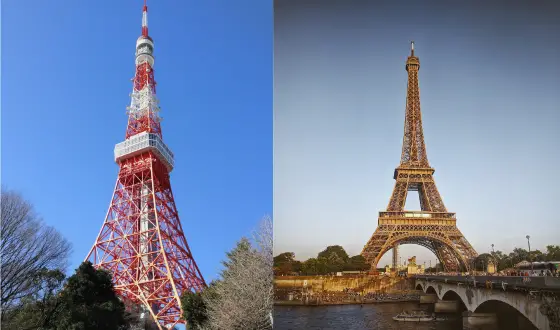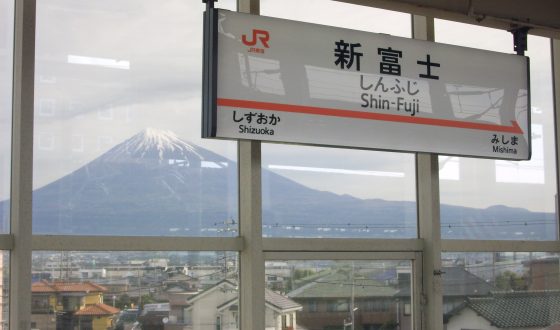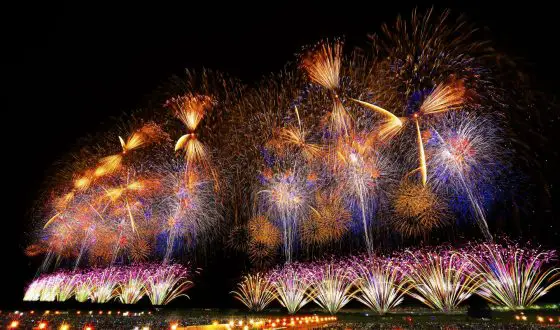Discover The Relaxation: Best Onsen Towns in Japan
It is said that if you come to Japan without taking an onsen bath, you have not yet arrived in Japan. To have a complete trip to Japan, it is impossible to ignore this unique culture of Japan. Here are some information suggestions and Best Onsen Towns in Japan suggestions that may help you when bathing onsen in Japan.
What is onsen?
Onsen – “温泉” is another name for hot springs. As a country with many active volcanoes, it is not difficult for Japan to have many hot springs. Hot spring activities are not only popular in this country of the rising sun, but also attract many tourists to this country every year.
Onsen is different from Sentou, if Sentou is a type of hot water that is heated and then put in a tub, an onsen is a completely natural hot spring. The water here is pure mineral water, very good for health. In addition to helping you relax and nourish your spirit, soaking in hot springs also has a very good healing effect.
10 best onsen towns in Japan
1. Kusatsu Onsen
Kusatsu onsen is known as one of the most popular onsens in Japan. Hot springs gushing at a rate of 32,300L/min, can be called the number one in Japan! The acidic hot spring with a pH value of 2.1 has a strong bactericidal effect and is said to be effective for skin diseases. In addition, transportation is relatively convenient, so it has welcomed a number of domestic Japanese tourists all year round
Detailed information:
- Address: Kusatsu Machi, Agatsuma District, Gunma Prefecture 377-1711.
- How to get to Kusatsu Onsen: from Tokyo, take the limited express “Kusatsu Shima”, the Joetsu Shinkansen or the Nagano Shinkansen.
2. Nasu Onsen (Tochigi Prefecture)
Nasu Onsen is a famous hot spring known as the oldest hot spring in Tochigi Prefecture, which has many hot springs.
The spring quality is a sulfur spring, and the smell of sulfur wafts throughout the area, making it a perfect place to enjoy the atmosphere of a hot spring.
It is also an excellent place to stay for a long time and to rest your mind and body away from the hustle and bustle of city life.
Another reason for its popularity is that you can enjoy various types of hot springs, such as an ancient cypress bath and an open-air bath surrounded by nature.
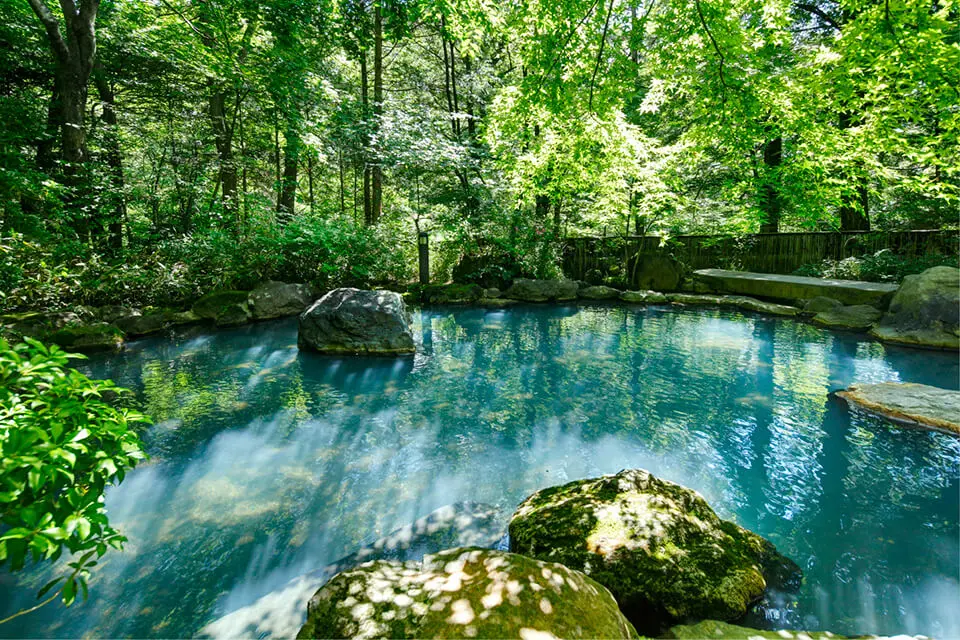
Nasu Onsen is a famous hot spring known as the oldest hot spring in Tochigi Prefecture, which has many hot springs. (Source: Internet)
Detailed information:
- Address: 181 Yumoto, Nasu Machi, Nasu Gun, Tochigi
- How to get to Nasu Onsen: From Tokyo, take the bullet train, then take a bus from Nasushiobara Station for around 40 minutes to your destination.
3. Atami Onsen (Shizuoka Prefecture)
Atami Onsen is a large hot spring town with over 500 sources. The average temperature of the source is extremely high at 63 degrees, and it is recognized as one of the best “hot spring resorts” in Japan.
The hot springs are clear and colorless and have no smell, so even first-timers can use them with confidence. There are also many hot springs that are effective in relieving fatigue and improving the digestive system. Access from the city center is very good, and one of the secrets of its popularity is that it can be reached in just 35 minutes from Tokyo Station if you take the Shinkansen.
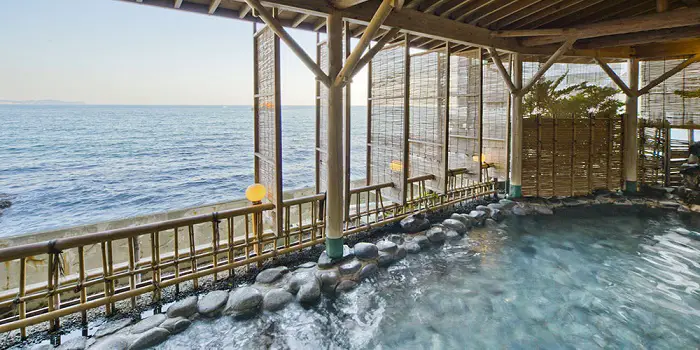
Atami Onsen is a large hot spring town with over 500 sources. (Source: Internet)
The whole area is prosperous as a hot spring town, so you can enjoy shopping and eating while walking. You are able to appreciate not only the hot springs but also the local landscapes.
Detailed information:
- Address: 11 Taharahon-cho, Atami-shi, Shizuoka-ken
- How to get to Atami Onsen: from Tokyo, take the Kodama Tokaido Bullet Train, the Odoriko Limited Express, the Regular Tokaido Train, or a bus.
4. Beppu Onsen (Oita Prefecture)
Beppu Onsen is also one of the representative hot springs in Japan. It is located near two volcanoes, Mt. Tsurumi and Mt. Garandake, and is popular with foreigners as well because you can enjoy the unique atmosphere of a hot spring town.
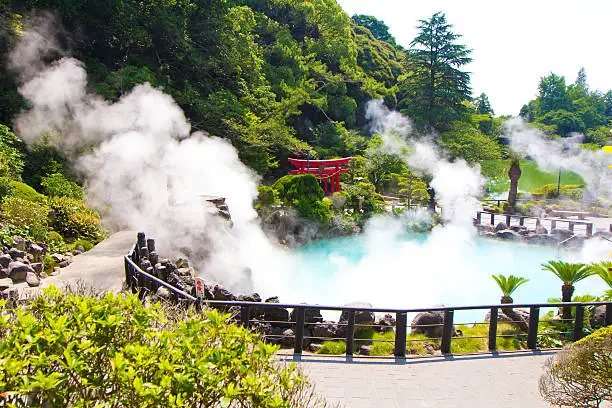
Beppu Onsen is also one of the representative hot springs in Japan. (Source: Internet)
Beppu Onsen has 8 hot spring villages called Beppu Hatto. The ingredients of the hot springs are also different, and you can enjoy a wide range of hot springs, from transparent hot springs to muddy hot springs. Recently, it has been attracting attention as an amusement park that combines hot springs and amusement parks for a limited time.
Detailed information:
- Address: Beppu City Railway
- How to get to Beppu Onsen: Take the Nozomi Shinkansen from Tokyo Station to Kokura Station, then change to the Sonic limited express to go to Beppu Station.
5. Arima Onsen (Hyogo Prefecture)
Arima Onsen is said to be one of the oldest onsens in Japan. Arima Onsen, located on Mt. Rokko is easily accessible from Kobe and Osaka, and is popular as a day trip hot spring spot.
Hot springs containing 7 of the 9 main ingredients designated as therapeutic hot springs are gaining popularity as a sanatorium for the mind and body.
By choosing a hot spring suitable for your disease, you can expect high efficacy.
Maiko culture is strongly rooted in the hot spring town, and one of the secrets of its popularity is that you can enjoy not only hot springs but also traditional traditions.
Detailed information:
- Address: Arima Town, Kita District, Kobe City, Hyogo Prefecture
- How to get to Arima Onsen: from Tokyo, take the Tokaido-Sanyo Shinkansen bound for Hakata and get off at Shin-Kobe Station. From Shin-Kobe, Arima Onsen is directly accessible by express bus.
6. Gero Onsen (Gifu Prefecture)
“Gero Onsen” is counted as one of the three famous onsens in Japan. It is a natural hot spring that boils at a high temperature of 84 degrees.
The characteristics of the hot springs are that they are colorless, transparent, alkaline, and have a faint scent that is not peculiar, so they are popular as hot springs that anyone can use.
Many bus tours are organized from Tokyo, Osaka, Nagoya, etc., making it an easy-to-visit hot spring resort even for those without a car.
You can enjoy both the atmosphere of a hot spring town that has flourished since ancient times and the vastness of nature.
Detailed information:
- Address: Mori, Gero City, Gifu Prefecture
- How to get to Gero Onsen: From Tokyo Station to Nagoya Station, take the Nozomi or Hikari train on the Tokaido/Sanyo Shinkansen lines. Take the Takayama-bound JR Limited Express Wide View Hida from Nagoya Station, and get off at Gero Station.
7. Kinugawa Onsen (Tochigi Prefecture)
Kinugawa Onsen is near Nikko in Tochigi Prefecture.
It is also called “Tokyo’s Okuyashiki” because it is easily accessible from Tokyo and has become popular as a sightseeing spot for people living in Tokyo.
The quality of the spring water is alkaline and is said to be highly effective against burns, so many people stay long-term for medical treatment.
You can find hot springs at hotels and inns or open-air baths built along the Kinugawa River.
It is also famous for being lined with various entertainment hotels so that even families can enjoy themselves.
Detailed information:
- Address: Kinugawa Onsen Ohara 1060-399, Nikko, Tochigi, 321-2522
- How to get to Kinugawa Onsen: From Asakusa Station in Tokyo, take the Tobu Nikko Line towards Nikko
8. Hakone Onsen (Kanagawa Prefecture)
Hakone Onsen is a large hot spring town known for its collection of 17 hot spring areas.
It is popular as a short-term stay because it is easily accessible from Tokyo and you can go to the hot spring area in a short time by changing trains.
In addition, the hot spring area that blends with the mountains is popular with foreigners, and you can see many foreigners there.
Many of the spring waters are highly effective in making the skin beautiful, making it a popular hot spring resort for women.
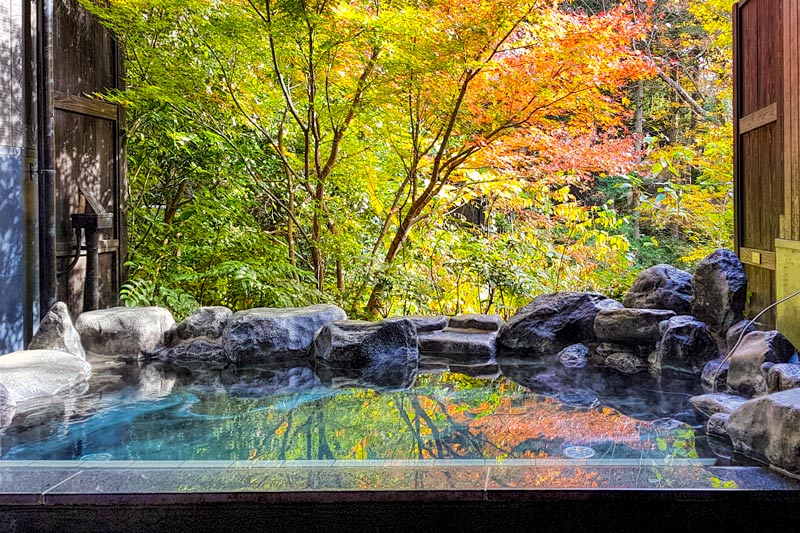
Hakone Onsen is a large hot spring town known for its collection of 17 hot spring areas. (Source: Internet)
In addition to being able to enjoy esthetics, massages, and relaxation, one of the secrets to its popularity is the fact that you can enjoy luxurious meals that use both the fruits of the sea and the mountains.
Hakone is also famous for its many museums, and known as an art town.
It is also known as the center of the Hakone Ekiden, and is a hot spring town that many people would like to visit at least once.
Detailed information:
- Address: Hakone, Ashigarashimo-gun Kanagawa
- How to get to Hakone Onsen: Take the JR Odakyu Line from Tokyo to Odawara Station, then take a bus ride to the city center in about 20 minutes.
You can also like:
- Suica vs Pasmo: Navigating Tokyo’s Transit Titans for Seamless Travel
- Things to Do in Shinjuku – Top Recommendations on Reddit
- When is Spring in Japan? A Guide to Witnessing the Enchanting Cherry Blossoms
9. Akiu Onsen (Miyagi Prefecture)
Akiu Onsen is a famous hot spring resort in Tohoku. There are many hot springs gushing out along the Natori River, and many hotels and inns are scattered about.
It is also called “Sendai’s back room” because it is in a good location about 30 minutes by car from Sendai.
The spring quality is weakly salty, and is said to be highly effective for rheumatism, neuralgia, wounds, and anemia.
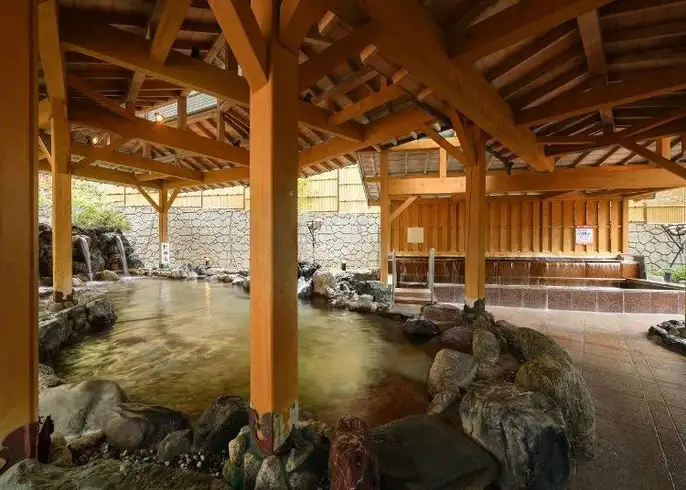
Akiu Onsen is a famous hot spring resort in Tohoku. (Source: Internet)
The trees along the Natori River are spectacular, and many tourists visit during the fall foliage season.
This onsen is a good idea for those who want to refresh their mind and body in wonderful scenery.
Detailed information:
- Address: 40-7 Terada Hara, Yumoto, Akiu-machi, Taihaku-ku, Sendai-shi, Miyagi
- How to get to Akiu Onsen: Take the bus route for around 50 minutes from JR Sendai Station to the Akiu Onsen Yumoto station.
10. Yufuin Onsen (Oita Prefecture)
As a hot spring town in Oita Prefecture, Yufuin Onsen is split in popularity from Beppu Onsen.
This hot spring area sprawls out at the foot of Mt. Yufudake, having one of Japan’s largest quantities of hot spring water and a great deal of hot spring sources.
The charming hot spring town and nature are popular, and many hot spring lovers come from all over Japan and overseas every year.
Thanks to the abundant amount of hot water, there are many hot spring facilities, and there are many public baths that can be used cheaply, so it is also ideal for visiting hot springs.
Detailed information:
- Address: Kawakami, Yufuin Cho, Yufu-shi, Oita.
- How to get to Yufuin Onsen: Take the JR Yufu line to Oita Station from Beppu Station, then switch trains to go to Yufuin Station.
Why are onsens popular?
Since ancient times, Japanese people have been drawn to hot springs. There are many archaeological sites and documents showing the relationship between Japanese people and hot springs, and traces of hot springs being used for hot springs have been found in ruins dating back to about 6,000 years ago from the Jomon period.
Hot springs are also mentioned in the Kojiki, Nihon Shoki, Fudoki, and Manyoshu (Japan’s famous works). Since the “Fudoki,” which is where the phrase “onsen” first appeared, many people have benefited from the therapeutic qualities of hot springs, including recuperating from physical diseases and warming the body.
Hot springs were blessed with warm water that naturally gushed out, and were revered as sacred to heal illnesses and injuries. Through travel and sightseeing, savor the flavor of hot springs.
In addition to bathing in the hot springs, many locations near the hot spring have become popular tourist destinations in the area. The Japanese love to enjoy hot springs by taking in the beauty and traveling experiences of hot spring inns and hot spring towns.
A trip to a hot spring resort allows you to experience a lot of the local culture, including well-known locations and regional food, in addition to indoor and outdoor baths.
Moreover, go to hot springs for hot spring can help you cure and rest. Toji, the term which refers to the treatment of illnesses by bathing in onsen, has been popular since ancient times. In the Showa period (1926-1989), transportation became more and more convenient, and it became easy to go to hot spring resorts.
As a result, the number of people who go to hot spring resorts not only for hot spring cure but also for recreational purposes will increase.With the rapid economic growth period, the economy improved, the number of people and groups of tourists increased, and the accommodation facilities also increased.
In addition, the hot spring town underwent a significant transformation from a hot spring resort to a hot spring vacation spot.
How many onsen towns are there in Japan?
The abundance of hot spring sources is what Japan is most proud of, in addition to the high caliber of its hot springs.
More than 27,000 sources of hot springs can be found throughout Japan. According to each prefecture’s ranking of the overall number of sources:
- 4,445 in Oita Prefecture
- 2,755 in Kagoshima Prefecture
- 2,252 in Shizuoka Prefecture
- …ect…
With a big difference from Kagoshima Prefecture in 2nd place, Oita Prefecture is in 1st place by a wide margin. In addition, the amount of hot spring water in Japan is more than 2,500,000 liters per minute, including the natural and power sources. Japan is regarded as one of the world’s top hot spring powerhouses as a result of the benefits of this abundant hot spring resource.
What is the oldest onsen town?
The Dogo Onsen in Ehime Prefecture, the Arima Onsen in Hyogo Prefecture, and the Shirahama Onsen in Wakayama are “Japan’s three oldest hot springs,” according to historical records. According to literature, Dogo Onsen is one of them and is the oldest hot spring in Japan – a well-known hot spring with a 3,000-year history. It is the oldest hot spring in Japan, which is mentioned in “Nihon Shoki”, “Manyoshu”, and “The Tale of Genji”.
There are 29 sources in total, 18 of which are currently active. The hot spring temperature varies from 20 to 55 degrees Celsius, but it seems that the temperature is adjusted by blending the sources. The average output is 2,000 tons per day. The hot water is collected in four separate hot springs and distributed to public baths and surrounding inns.
Detailed information:
- Address: Dogo Yuno Machi, Matsuyama City, Ehime Prefecture
- How to get to Dogo Onsen: Take the JR Tokaido/Sanyo Shinkansen from Tokyo to Okayama. Transfer to the JR Shiokaze limited express and go to Matsuyama from there. 4-minute walk from the station to Dogo Onsen Honkan.
Basic Etiquettes of onsen
You won’t need to worry if you follow the basic onsen manners and guidelines listed below when visiting an onsen for the first time in Japan.
- Make sure to wash your body well before stepping into the bath
- Tie your long hair up on top of your head.
- Avoid putting towels in the bath.
- Do not make noise while bathing so as not to irritate others.
- Wipe your body with a towel before leaving the onsen
- Avoid using photos or cell phones in the restroom or changing rooms.
- Avoid dying or shampooing your hair in the onsen.
Although some onsen have their own rules, these are the general guidelines.
If your tattoo is little, you can hide it with a wrap, but if it’s large or on your back or arm, you might not be allowed.
Select a lodging option with a private hot spring if you are unable to use a public hot spring.
Health benefits of onsen
1. Thermal effect
Hot springs have various effects. The first is the thermal effect. Soaking in a hot spring warms your body and expands your blood vessels, especially peripheral ones. Dilated blood vessels improve blood circulation, improve metabolism, and promote the excretion of unnecessary substances in the body.
Of course, lactic acid, which is a fatigue substance, is also discharged, so you can expect the effect of fatigue recovery. These effects occur only when the whole body is warmed up in the bathtub, so you can’t expect much of an effect from a bathing method that involves soaking for a short time and taking a rushed shower.
2. Water pressure effect
This is the effect that pressure is applied to the whole body when the surface of the body receives pressure from water called hydrostatic pressure when soaking in the bathtub. The hydrostatic pressure stimulates the internal organs and the whole body, and by exercising, you can naturally receive a gentle massage effect all over your body. This hydrostatic pressure causes your stomach and buttocks to shrink when you soak in the bathtub.
About one-third of the total blood volume is collected and sent back to the heart, so the legs are called the “second heart”. However, when you take a bath, these legs are also stimulated by the hydrostatic pressure, and the water pressure causes the blood vessels to narrow, pushing the blood and body fluids that have accumulated in the extremities back to the heart. It is thanks to this function that swelling is eliminated when soaking in a bathtub.
3. Buoyancy effect
Finally, let’s talk about the buoyancy effect. When you soak in a hot spring, you will feel lighter due to the buoyancy in the water. The resulting effect is the buoyancy effect. If you soak in the hot springs up to your neck, your body weight will be reduced to about one-tenth and you will be able to move your body freely.
This reduces the burden on the joints and muscles that support the whole body, allowing the whole body to relax. In addition, as the body becomes lighter, the muscles relax, so the brain waves emitted are in a state of “alpha waves”, and not only the body but also the brain can be easily relaxed.
Due to lack of exercise and the use of air conditioners, it is difficult for modern people to sweat. As the chances of sweating decrease, the function of the sweat glands tends to decline, but in fact, metallic substances such as mercury can only be discharged through sweat. If these substances cannot be discharged, symptoms that are not very good for the body may appear, such as dizziness, poor judgment, and irritability…
Furthermore, since the function of the kidneys is enhanced by the thermal effect of bathing, diuresis is also promoted at the same time as perspiration. Like sweat, urine is an important excretory function that excretes waste products and unnecessary water, so it can be said that bathing has a great effect on excreting waste products from the body.
FAQs
1. Do Japanese onsen have gender?
In general, onsen in Japan is split between men and women, but there are also shared bath onsen or women-only onsen. If using a shared onsen, women will be provided with towels.
2. Is onsen expensive in Japan?
Onsen prices depend on the type of onsen water and location. Public onsen costs an average of 500-200 yen per person. More luxurious and private onsen cost between 5000-10000 yen per person.
3. What should you wear when bathing onsen?
Except for the case of shared onsen, onsen men and women bathing separately, not too important about costumes. It is better to wear clothes that are easy to take off. You should also bring new clothes to change into after bathing. Traditionally, try on a yukata and Japanese clogs.
4. How long should you stay in an onsen?
The onsen bath time depends on the temperature of the water. If the temperature is around 36°C , you can shower for up to 40 minutes, if it’s 42°C , it shouldn’t be longer than 10 minutes. The hotter the water, the longer you should not bathe
5. Under what circumstances should you avoid onsen?
If you suffer from any of the following conditions, the quality of the hot springs may exacerbate the symptoms.
- High fever
- Severe hypertension, arteriosclerosis
- Myocardial infarction, angina attack
- Severe heart or liver disease
- Severe diabetes
- Rheumatoid arthritis
- Cancer, leukemia, sarcoma
- Stomach/duodenal ulcer
- During pregnancy or immediately after childbirth
- Acute infectious disease
Also, make sure to drink enough water before entering the hot spring, do not use it when you are drunk, do not stand up suddenly, pour the hot water on yourself and avoid bathing for a long time.
Why Aren’t Tattoos Acceptable?
Japanese people have long believed that tattoos are connected to crime. As a result, they decided to prevent tattooed individuals from using the onsen. This attitude is altering, though, as many onsen now welcome tattooed visitors to the hot springs. Small tattoos are OK in some onsens as long as you hide them with a sticker, bandage, or some comparable covering.
Conclusion
The Japanese have a distinctive hot spring culture that dates back to ancient times. They use these natural blessings, not only to preserve their health but also as popular tourist sites. It is now highly well-liked among foreign tourists as a location where you can truly appreciate the flavor of Japan. Why don’t you try to visit the above best onsen towns to have a relaxable experience when coming to the best onsen towns in Japan?

